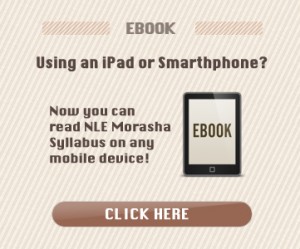 CAVEAT: This Discussion Primer is a separate, independent component of the Am I Ready to Find My Soul Mate? series. It is a more direct framework to broach the question of “Why Marry Jewish” with one’s students, and is not intended for educators to teach as a class. Rather, it is offered as background material for educators who would like to engage their students in informal, one-to-one discussions on intermarriage. Educators can decide which parts are appropriate, if at all, for their particular students. It is only available in Word format.
CAVEAT: This Discussion Primer is a separate, independent component of the Am I Ready to Find My Soul Mate? series. It is a more direct framework to broach the question of “Why Marry Jewish” with one’s students, and is not intended for educators to teach as a class. Rather, it is offered as background material for educators who would like to engage their students in informal, one-to-one discussions on intermarriage. Educators can decide which parts are appropriate, if at all, for their particular students. It is only available in Word format.
***************************
Ever since demographic studies in the 1990’s revealed that in the United States, on average, over 50 percent of Jews marry non-Jews, the phenomenon of intermarriage has occupied the minds of rabbis, lay leaders, educators, and sociologists alike. Throughout most of Jewish history, the Torah’s prohibition against intermarriage combined with the Jewish people’s own age-old cultural aversion to “marrying out” – not to mention the anti-Semitism of the non-Jewish population, who were certainly not interested in marrying Jews – were sufficient factors to make intermarriage almost nonexistent amongst Jews.
But today the reality is different. The latest Pew study in 2013 shocked the Jewish community, with the revelation that 70 percent of (non-Orthodox) Jews intermarry. Inter-marrieds are more likely than not to be the products of non-observance, acculturation, and assimilation into general society for over three generations. The barriers and differences in culture, language, and religion which would have kept Jews and Gentiles apart in previous eras are, for many people, simply absent today.
The discussion about intermarriage is complex because it has ramifications on many levels, from the technical-legal level to the cultural. Considering the scope of this class, we do not recommend that it be given in isolation of other more fundamental discussions about Judaism and Jewish history, or outside the context of some meaningful Jewish experiences, like a Shabbaton or a trip to Israel. No one’s identity will be changed overnight, or by their participation in a single lecture.
The point of this Discussion Primer is to raise issues – difficult issues – regarding who we think we are and how that should affect who we date, choose to marry, and commit ourselves to building a family with. But unlike the four previous classes in this series that aimed to develop a new awareness of self that would preclude intermarriage, here we address the practical issues head on. The aim here is to help the students think through their attitudes towards marrying in versus marrying out.
As such, we will be asking the following questions:
- What is your take on intermarriage? Is it a sign of progress and tolerance or an existential threat to Jewish existence, or somewhere in between?
- Do we define ourselves as Jews first and American, British, Israeli, etc. only second, or vice versa? Or are we just individuals, citizens of the world, not bound to national or cultural identities altogether?
- Is it racist to insist on marrying exclusively within one’s own people? With little or no exposure to Jewish observance, what rationale is there to “marry in”?
- What role does culture and religion play in your own value system? Is it conceivable that your attitude towards these things may change in the future?
- What effect does intermarriage have on family life? Do the children of intermarriage benefit from the exposure to different cultures, or are they just confused by it?
- What does the Jewish tradition have to say about intermarriage? What rationale does it offer to justify Jews marrying only other Jews? If the children of an intermarried couple will technically remain Jewish due to the gender of the Jewish parent, is the intermarriage really problematic?
See also the Teacher’s Guide to the Am I Ready to Find My Soul Mate Series




















